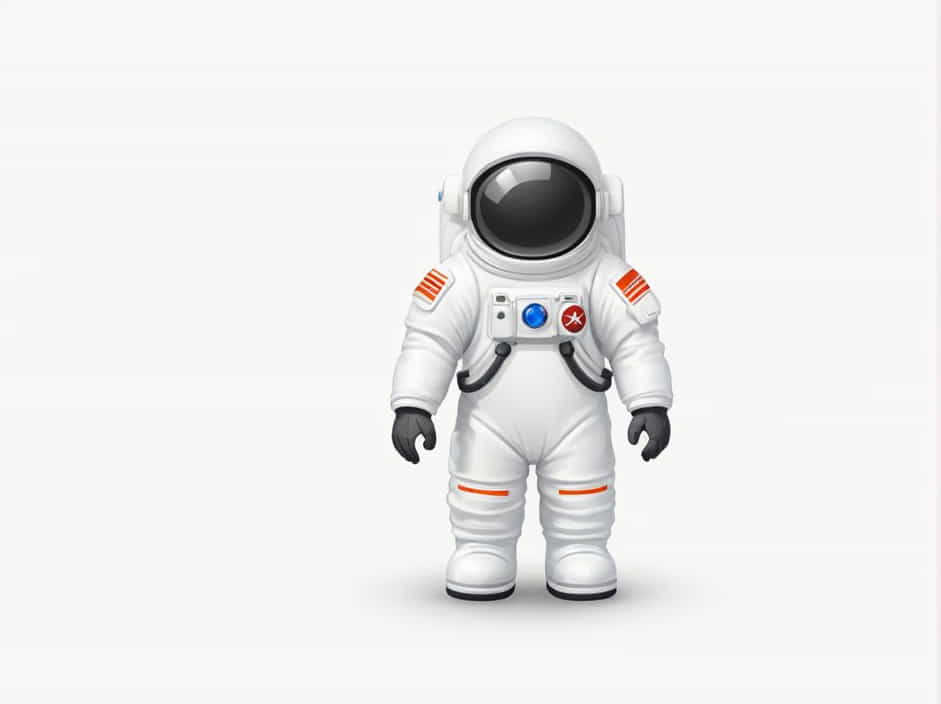When we think of astronauts, one of the first images that come to mind is their iconic space suit. These high-tech suits are more than just clothing; they are miniature spacecraft designed to keep astronauts alive in the extreme environment of space.
The official term for an astronaut’s space suit is the Extravehicular Mobility Unit (EMU). This advanced suit is used by NASA for spacewalks, repairs, and exploration outside spacecraft. It provides astronauts with oxygen, protection, and mobility in the vacuum of space.
Understanding the EMU’s design, functions, and history helps us appreciate the challenges of space exploration. This topic takes a closer look at the spacesuit’s role, its components, and future innovations.
Why Do Astronauts Need a Space Suit?
Space is a harsh and unforgiving environment. Without a protective suit, an astronaut would not survive due to:
- Lack of Oxygen: Space is a vacuum, meaning there is no air to breathe.
- Extreme Temperatures: Temperatures can range from -250°F (-157°C) in the shade to 250°F (121°C) in direct sunlight.
- Radiation Exposure: Without protection, astronauts could be exposed to harmful solar and cosmic radiation.
- Microgravity Hazards: Floating debris and micrometeoroids can cause significant damage.
The EMU is essential for astronaut safety, allowing them to work outside their spacecraft for up to eight hours at a time.
A Brief History of Spacesuits
Spacesuits have evolved significantly over the years. Here’s how they developed:
1. Early Spacesuits (1950s-1960s)
During the Mercury and Gemini programs, astronauts wore basic pressure suits for emergency use inside the spacecraft. These suits were not designed for spacewalks.
2. Apollo Program (1960s-1970s)
The A7L spacesuit was the first designed for walking on the Moon. It was used by Neil Armstrong and Buzz Aldrin during the historic Apollo 11 mission in 1969.
3. Shuttle Program EMU (1980s-Present)
NASA introduced the Extravehicular Mobility Unit (EMU) for spacewalks outside the Space Shuttle and International Space Station (ISS). This suit became the standard for all modern spacewalks.
4. Future Spacesuits (2020s and Beyond)
NASA and private companies are now developing next-generation spacesuits for future missions to the Moon, Mars, and deep space exploration.
Key Components of the Extravehicular Mobility Unit (EMU)
The EMU consists of several parts, each playing a critical role in protecting and assisting astronauts.
1. Hard Upper Torso (HUT)
- The rigid upper section of the suit.
- Houses the life support system and communication systems.
- Connects to the helmet and arms for stability.
2. Lower Torso Assembly (LTA)
- Includes flexible legs, boots, and waist components.
- Designed for movement and balance in microgravity.
3. Primary Life Support System (PLSS)
- A backpack system that supplies oxygen and removes carbon dioxide.
- Regulates temperature, pressure, and ventilation.
- Monitors astronaut vital signs.
4. Helmet and Visor Assembly
- Protects against radiation, micrometeoroids, and bright sunlight.
- Features a gold-coated visor to block harmful rays.
- Equipped with a radio system for communication.
5. Gloves and Arm Mobility Units
- Specially designed for dexterity and grip in space.
- Made with Kevlar layers for protection.
- Include heated fingertips for extreme cold.
6. Liquid Cooling and Ventilation Garment (LCVG)
- Worn underneath the suit.
- Uses water tubes to regulate body temperature.
- Prevents overheating during spacewalks.
How Does the EMU Work?
1. Oxygen Supply and Pressure Control
The PLSS backpack provides a steady flow of oxygen while maintaining proper suit pressure. It also removes exhaled carbon dioxide.
2. Temperature Regulation
In space, temperatures fluctuate drastically. The LCVG system circulates water through the suit to keep astronauts comfortable.
3. Mobility and Dexterity
Though bulky, the EMU allows astronauts to move, grip tools, and perform complex tasks during a spacewalk.
4. Communication Systems
Built-in radio transmitters in the helmet allow astronauts to communicate with mission control and fellow crew members.
5. Safety Features
- Tethers and Handrails: Prevent astronauts from floating away.
- SAFER (Simplified Aid for EVA Rescue): A mini jetpack that helps astronauts return to the spacecraft.
- Emergency Oxygen Tanks: Provide extra air if the main system fails.
Challenges of Wearing an EMU
Despite its advanced design, the EMU has some challenges:
- Heavy Weight: The suit weighs about 275 pounds (125 kg) on Earth, though in space it feels weightless.
- Limited Mobility: Pressurized gloves can make gripping objects tiring.
- Short Battery Life: The suit can operate for a maximum of 6-8 hours per EVA.
To improve astronaut experience, NASA is developing lighter and more flexible suits for future missions.
Future of Spacesuit Technology
NASA and private companies are designing next-generation spacesuits with enhanced mobility and safety features.
1. Exploration EMU (xEMU)
Designed for the Artemis program, the xEMU suit will:
- Offer better flexibility for lunar exploration.
- Be resistant to Moon dust.
- Support longer missions.
2. SpaceX Starship EVA Suit
SpaceX is developing an advanced spacesuit for astronauts aboard Starship. This suit will be lighter, more efficient, and adapted for Mars exploration.
3. Commercial Spacesuits
Private companies like Axiom Space and Collins Aerospace are also creating suits for future commercial spaceflights and space tourism.
Why Understanding the EMU is Important
Spacesuits are a vital part of space exploration. Without them, astronauts wouldn’t be able to:
- Repair spacecraft and satellites.
- Explore planetary surfaces.
- Conduct scientific research outside the ISS.
As technology advances, spacesuits will become smarter, more adaptable, and better suited for deep space exploration.
The official term for an astronaut’s space suit is the Extravehicular Mobility Unit (EMU). It is a complex and highly engineered system that protects astronauts from the extreme conditions of space while allowing them to work efficiently.
With upcoming missions to the Moon and Mars, new and improved spacesuits will enhance astronaut performance, safety, and comfort. The future of space exploration depends on continued innovations in spacesuit technology, ensuring that astronauts can venture further into the cosmos than ever before.
